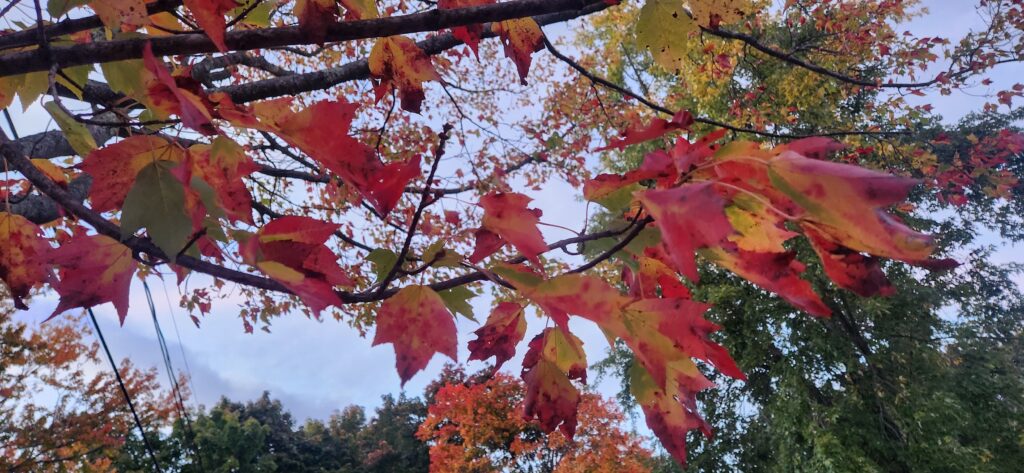People turn to yoga for many reasons—physical health, mental clarity, or finding peace during life’s challenges. One of life’s most difficult challenges that we will all face is death.
At some point, we all lose loved ones, and one day, we will face our own mortality. While death is inevitable, yoga (and other spiritual traditions) offers many tools to help us face it with grace, both for ourselves and for those we care about. By reflecting on death while we are still living, we can approach it with a greater sense of peace and acceptance.
For yogis seeking guidance on how to handle the difficult emotions around death, whether it’s the loss of a loved one or contemplating their own mortality, it can be challenging to know where to start. I’ve found that in our modern society, death can be a taboo topic—one that we don’t talk about openly. I believe it’s important to bring these conversations into the light.
Sitting with Death
A teaching from the Mahabharata offers a profound reflection on human nature. When the sage Yudhishthira is asked, “Of all things in life, what is the most amazing?” he responds, “That a man, seeing others die all around him, never thinks that he will die.” This statement captures a common human tendency to avoid facing the reality of death, despite its constant presence.
In recent lectures I’ve attended with Dr. Svoboda, he has shared reflections on death and ancestors, drawing from the yogic tradition. Below, I outline a few of the key points that have stood out to me from these lessons and teachings on death.
Greeting Death Each Day
Vimalananda, a teacher of Dr. Robert Svoboda, built on this concept by teaching that every day, we should remember that we are going to die. This daily reflection is not meant to create fear, but to help us come to terms with the reality of death so that we are not blindsided when it arrives. By remembering death daily, we are encouraged to live more fully, with awareness and intentionality.
In todays class, Svoboda reflected on this and shared his own daily practice: “Thank you, God, that I am alive, and yet I know that one day I will die. If today is the day, let me be prepared. Let my awareness be fixed on the important things and not get lost in the mundane.” This mindfulness practice encourages us to focus on what truly matters and prepares us for death, not as a source of fear, but as a natural part of life.
Softening Attachements
When supporting loved ones who are dying, Svoboda also emphasizes sending them love and compassion rather than holding onto them: “Om, thank you for loving me, I love you and will continue to love you. Please don’t feel that you need to stay here for me. Carry on on your path.” This sentiment of releasing attachment with love is deeply aligned with yogic philosophy, encouraging us to let loved ones pass on peacefully.
Spiritual Insights on Death
Bhagavad Gita
Yogic texts such as the Bhagavad Gita provide further guidance on preparing for death. In Chapter 8, Verse 12, the Gita describes a yogic technique for preparing for death:
sarva-dvārāṇi saṁyamya / mano hṛdi nirudhya ca
mūrdhny ādhāyātmanaḥ prāṇam / āsthito yoga-dhāraṇām
This verse describes the process of closing the gates of the senses, focusing the mind on the heart, and raising the prana (life energy) to the head, allowing the yogi to leave the body with full awareness. This aligns with teachings on conscious dying, emphasizing that our focus at the moment of death shapes our journey beyond this life.
Swami Veda Bharati’s teachings in Meditation and the Art of Dying echo this wisdom, highlighting the importance of preparing for death through meditation and consciously focusing on what truly matters as we approach our final moments—just as in the story of Ajāmila. Ajāmila, who had led a life of misdeeds, was saved at the moment of death by calling out the name of his son, “Nārāyaṇa,” which also happens to be a name of the divine. This last-minute shift in consciousness alters his journey after death, showing the power of our thoughts.
Tibetan Buddhism
The Dalai Lama also speaks to this awareness:
“Awareness of death is the very bedrock of the path. Until you have developed this awareness, all other practices are useless.”
All of this wisdom reinforces the importance of confronting our mortality while we are still alive so that we can live with greater clarity, peace, and purpose.
Supporting Practices
In addition to these reflections, yogic practices such as pranayama, gentle yoga, and meditation can support us on this journey by calming the mind, processing emotions, and fostering acceptance.
- Pranayama (breathwork) calms the nervous system and grounds the mind. This can be especially helpful in dealing with grief and fear. Techniques like Nadi Shodhana (Alternate Nostril Breathing) have been shown to regulate emotional responses and reduce stress. You can start with something as simple as slow and controlled breathing to help manage the physical and emotional impacts of grief and fear. Try practicing for 3-5 minutes daily to feel the benefits over time.
- Gentle Yoga can help move emotions that are stored in the body. Poses such as Child’s Pose and Reclining Bound Angle Pose provide space for relaxation and introspection, allowing the body to process tension and stress. Hold each pose for 3-5 minutes to allow your body to fully relax and let go of emotional tension.
- Meditation offers a way to process grief, reduce death anxiety, and foster acceptance. Practices like Mindfulness Meditation and Loving-Kindness Meditation have been found to ease the emotional pain of loss and help individuals come to terms with their mortality. Start with a short, regular meditation practice—5-10 minutes daily—to cultivate the ability to quiet the mind and focus attention on peace and presence.
Further Support and Resources
While yoga can offer invaluable tools for managing grief and mortality, it’s important to remember that some emotions and experiences may require deeper support. Professional guidance—from a therapist, counselor, or spiritual guide—can provide additional resources and compassion when navigating these profound life transitions.
Here are a few books that offer further insight into aging, grief, and mortality:
- Wise Aging: Living with Joy, Resilience, and Spirit by Rabbi Rachel Cowan and Dr. Linda Thal
A thoughtful guide to aging with intention, Wise Aging offers practical tools and reflections to help us grow older with grace, wisdom, and joy while embracing the reality of life’s impermanence. - Number Our Days by Barbara Myerhoff
This anthropological study of an elderly Jewish community offers profound insights into the human experience of aging, death, and the importance of community in navigating life’s final stages. - The Wisdom of Yoga: A Seeker’s Guide to Extraordinary Living by Stephen Cope
Blending ancient yoga philosophy with modern psychology, this book provides practical guidance on how to live with purpose and mindfulness, offering wisdom on how to approach grief and death. - The Untethered Soul: The Journey Beyond Yourself by Michael A. Singer
A spiritual exploration of how to let go of attachment and fear, this book offers insights into navigating life’s transitions, including death, with peace and acceptance. - Meditation and the Art of Dying by Swami Veda Bharati
This insightful book delves into meditative practices that help prepare for the moment of death, drawing from ancient yogic teachings. Swami Veda Bharati emphasizes the importance of conscious dying and the role of meditation in achieving a peaceful transition beyond this life.





